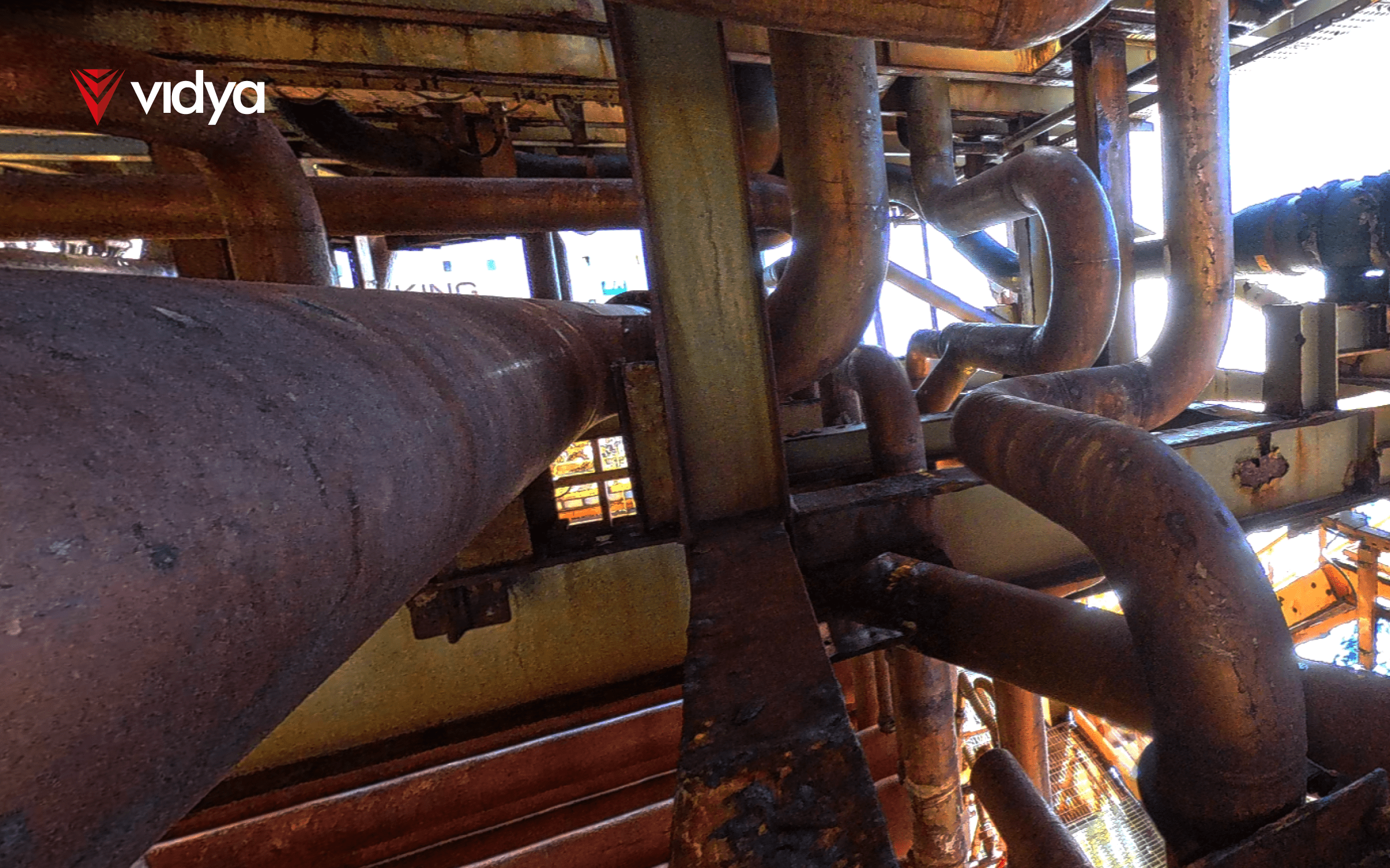Temporary repairs are interim solutions applied to damaged or degraded equipment to maintain safety and functionality until a permanent repair can be executed. These kind of repairs are common in every industry where equipment operates under high pressure, temperature, or corrosive conditions, and shutting down operations for full replacement or overhaul isn’t always immediately feasible. Temporary repairs are not meant to last indefinitely, but can be strategic for avoiding production loss, mitigating safety risks, and buying time until a planned intervention can take place. Thus, when does a temporary repair become the safest move?
Why Do Temporary Repairs Happen?
Think of it as getting a flat tire on your bike halfway home, and patch it just enough to keep riding safely until you can fix it properly. The same principle applies in industrial settings. Sometimes, a turnaround — a large, scheduled maintenance shutdown — is planned for a time that is still months away. However, corrosion, cracking, or leaks may appear long before the turnaround window opens. In such cases, immediate attention is required to prevent further degradation or unsafe conditions. Temporary repairs provide a way to stabilize the situation without the need for an unscheduled outage, giving teams the flexibility to engineer and install a more durable, permanent solution during the planned turnaround period.
Whether it’s to address a sudden fault or maintain aging equipment, the safe and effective application of temporary repairs helps uphold asset integrity during the interim. When planned and executed properly, they can extend the safe operating life of equipment until more comprehensive work can be completed.
What is a Turnaround
A turnaround is a scheduled and often large-scale shutdown of industrial equipment or a processing unit for inspection, overhaul, cleaning, and permanent repair. They represent comprehensive, facility-wide events that involve taking the entire plant offline. While a shutdown might last days, a turnaround often spans weeks or even months, depending on the asset’s size and the scope of work. These are rare and strategic, usually taking place every 4 to 10 years.
Types of temporary repairs
Temporary repairs come in many forms depending on the nature of the damage, the operating environment, and the urgency of the situation. While some repairs are mechanical and others chemical or structural, all share a common goal: to restore safe operability and buy time for a permanent repair.
Mechanical Clamps and Enclosures
Steel clamps or enclosures, often referred to as “box” repairs, are one of the most common temporary repair methods. These clamps are mechanically fastened around the damaged area of piping or pressure vessels to contain leaks or reinforce thinning material. Their non-intrusive nature allows them to be installed quickly and without hard work, making them especially useful in emergency situations or on live systems. While these clamps can sometimes be approved for extended service, their primary role is as a temporary solution that maintains containment until a planned, engineered repair can be executed during turnaround.
Epoxy or Metal-Filled Compounds
For minor surface defects, such as small cracks or corrosion pits, epoxy or metal-filled repair compounds offer a fast and cost-effective solution. These materials are manually applied to the affected area and cure to form a seal that halts the progression of the damage. They are particularly effective on low-pressure systems, including tanks, valves, and small-diameter piping. According to an article by engineering researcher Bhavith K, incorporating metal fillers into epoxy resins enhances mechanical properties, such as tensile strength, hardness, and overall performance. However, because they provide little to no structural reinforcement, their use should be limited to non-load-bearing components and short durations.
Rubber Gaskets and Clamps
In scenarios where rapid containment is needed, especially in buried or hard-to-access pipelines, rubber gaskets combined with mechanical clamps are preferred. The rubber provides the sealing interface, while the clamp holds everything securely in place. In this context, materials like EPDM, silicone, and FKM are commonly used due to their chemical resistance and temperature tolerance. This approach eliminates the need for welding or curing time and is particularly beneficial in systems where downtime must be minimized. However, due to the potential degradation of rubber under heat or chemical exposure, this method is best suited for low-pressure environments and short-term applications.
Welded Metal Plates or Sleeves
Welded repairs, involving the application of metal plates or sleeves over areas of concern, offer a stronger and more durable temporary solution when structural support is required. These repairs are typically carried out during controlled conditions, such as a brief shutdown, and are often used to address cracks or wall thinning in pressure boundaries. While they provide a more robust level of reinforcement compared to clamps or compounds, welding on live systems introduces significant safety and regulatory challenges. As a result, they are considered a higher-risk temporary measure that demands careful engineering assessment.
Composite Repairs
Although composite repairs can be temporary, not every composite repair is temporary. Composite systems are widely used across the energy industry as fully engineered, permanent repair solutions, especially when designed and installed following standards like ISO 24817 or ASME PCC-2. However, composite materials can also be applied as temporary repairs under certain conditions, offering a fast and effective stopgap until a permanent solution is implemented.
A recent Marsh report stated that pre-established codes, such as the mentioned standards, define the requirements for composite repair system design, with further advances in the materials being used, allowing more challenging repair scenarios to be tackled. In this sense, composite repairs use fiber-reinforced polymer (FRP) materials to restore integrity to components affected by corrosion, erosion, or mechanical damage. And, when the full engineering process for a permanent repair isn’t feasible before a turnaround, composite systems can be deployed as temporary reinforcements.
What Happens When Temporary Repairs Aren’t Managed Properly
Whether or not you use temporary repairs, what matters most is how they’re managed. A temporary repair can be a practical and safe solution—but only if its limitations, expiry date, and technical context are tracked. Without proper oversight, temporary fixes can be left in place too long, creating blind spots in asset integrity and complicating future maintenance planning.
Untracked or undocumented repairs also make it harder to assess equipment condition, allocate resources, and ensure compliance with regulatory standards. Maintaining clear records and integrating temporary repair data into your integrity system enables better decision-making, reduces risk, and supports smoother transitions to permanent solutions during turnarounds.
Moreover, failure to act can erode stakeholder confidence and delay turnaround planning, forcing teams to react instead of strategize. When used responsibly, temporary repairs allow facilities to maintain operational stability and protect personnel and assets while working toward a permanent solution.

Managing Repairs with Ease
Temporary repairs, by nature, come with a built-in deadline and shouldn’t turn into permanent ones. When one is applied, a clock starts ticking, whether based on regulatory constraints, material degradation, or operational risk. And, as multiple temporary interventions are implemented across large facilities, keeping track of each repair’s location, condition, and expiration becomes a logistical challenge, particularly knowing that repair data is represented by thousands of spreadsheet lines with limited visibility, no real control, and information prone to being lost. This is where digital infrastructure plays a critical role.
Integrating repair data within a digital twin environment makes it possible to contextualize spatially all temporary repairs within the facility. Instead of relying on spreadsheets or dispersed documentation, teams can visualize exactly where each repair is located, assess its condition, and receive automated alerts as expiration dates approach. With a centralized system managing inspection records and scheduling follow-up activities, the risk of oversight is significantly reduced.

Vidya’s Asset Integrity Management (AIM) platform enables this approach by linking physical asset conditions to digital records, making it easier for engineers and planners to prioritize interventions. Field teams can access this information through mobile applications, ensuring that repair verification, data input, and inspection results are seamlessly integrated into the broader asset strategy. In this way, temporary repairs are no longer isolated events—they become traceable, actionable elements within a unified operational framework, supporting safer and more informed decision-making throughout the asset’s lifecycle.



